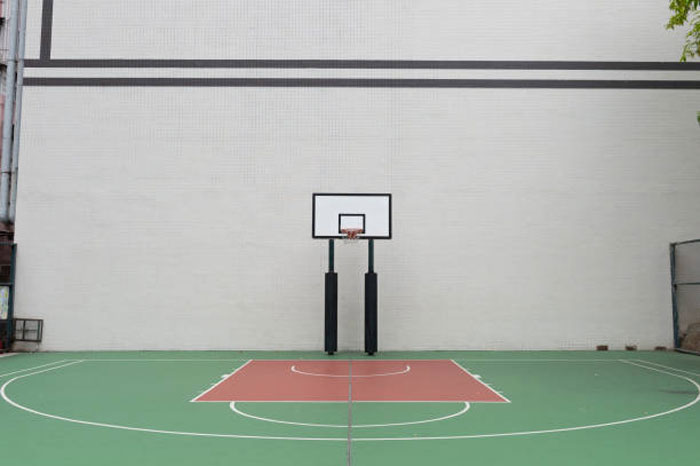Have you ever wondered what the NBA 3 point line means? Do you ask yourself how basketball pioneers created the 3-point line?
Have you ever imagined what basketball was like before the 3-point line? Would you like to know the first player to make a 3-point shot in NBA history?
Or do you want to know how far the 3-point line is from the center of the basket? How do different leagues vary 3-point line distances from the basket? Now, enough of the questions, let's get to the answers.
NBA 3 Point Line Defined
Merriam-Webster defined a 3-point line as an arc with a set distance to the basket (22 feet). Making a field goal beyond that line scores three points.
3-point shooters are like a lifeline to the team; there is pressure on them at the last 2 minutes of the game when the team needs to catch up to score in a close match.
According to the official NBA rule no. 5: scoring a successful field goal attempt outside the 3-point line is equivalent to three points.
However, for the score to count, there are conditions. The first is that at least one foot is beyond the 3-point line before the attempt.
Second, the shooter must not touch or get inside the line. The third is the player can step inside the 2-point area or on the 3-point line, but the player must do so after releasing the ball.
The 3-point line looks like an arc with two parallel lines. These lines have a distance of 3 feet from the outer boundary on each courtside.
The spot closest to the basket is between the sideline and the three-point line. Commentators coined this place as "corner three."

According to this article, before the advent of the 3-point line in the NBA, giants like Wilt Chamberlain and Bill Russell dominated the basketball world. The 3-point line gives equality to smaller players, but it doesn't change the overall game.
On the other hand, the arc has a distance of 23 feet 9 inches from the basket, and this length is uniform.
History of the NBA 3 Point Line
Abe Saperstein of the American Basketball League created the 3-point rule. Back then, he was a commissioner, and he thought of devising a way to be on par with baseball's home run.
Together with Rey Meyer, they took tapes to a court and chose 25 feet as a preferable distance. Abe's son recalled that they just drew lines with no scientific basis at all. Eventually, other owners voted that the line was too far and needed to shorten it to 22 feet.
Due to a lack of promotion and investors, ABL shut down. Other leagues started to follow what Saperstein formulated.
ABA Commissioner, George Mikan, said that the 3-point line would give chances to short players. The defense would open up, and the 3-point line would make the game more interesting.
Fans were skeptical and thought it was just a gimmick. Jerry Harkness of the Indiana Pacers never thought of scoring a 3 point before, but that shot made his team win against the Dallas Chaparrals.
ABA and NBA merged into one league and tried the 3-point rule at one of their games in 1979. Then, Chris Ford of the Boston Celtics made the 1st 3-point shot in NBA history.
Changes in Gameplay Strategy: Post 3-Point Line Era
At first, the NBA 3 point line made coaches rethink their strategies. They tried to utilize 3-point lines as a late game-changer, and Michael Jordan, unacquainted with the move, had to learn it.
Coaches think 3-point shots are more efficient as it's better to hit fewer of your 3 points than shoot more of 2 points because 3-point shots are 50% more than 2 points.
As gameplay strategies continue to evolve, we see players take the risk of shooting 3 points out in the open rather than facing the defense and aiming for 2 points. It's fascinating to look at the evolution of basketball rules.
How Far Is the 3-Point Line From the Basket? Different Leagues Compared
The NBA has the farthest 3-point line distance from the basket, which is 23 feet 9 inches. NCAA, FIBA, and Women's NBA measure their 3-point line distance at 22 feet 1 ¾ inch.
Before, the NCAA adopted a 20-feet-9-inches rule, but as regulations change at the end of 2019, it seems that coaches never bothered about this huge gap. To prove this, Pat Kelsey, coach at Winthrop, says that they'll double down and shoot more.
Since the NBA's (also WNBA's) parallel line distance from the sideline is 3 feet, the 3-point line's minimum distance from the basket is 22 feet. Conversely, FIBA has 2 feet 11 inches parallel line distance from the sideline. So, their minimum distance from the basket is 21 feet 8 inches.
Random Facts About the NBA 3-Point Line
The most accurate 3-point shooter in the history of the NBA is Steve Kerr, with a percentage of 45.4.
Hubert Davis closely follows Kerr with an accuracy of 44.1%. The third-best 3-point shooter is Stephen Curry, currently playing for Golden State Warriors. 43.6% of his 3-point shots get in the basket.

Ray Allen made the most 3-point field goals in his entire career, reaching 2973. He played basketball from 1996-2014.
Wrap-up
The introduction of the NBA 3 point line revolutionized the way athletes play.
Before, players scored efficiently by shooting near the basket, and it didn't matter how far, anyway.
The 3-point line's evolution from league to league lets each player have a chance while retaining basketball's core principle.
3-point lines vary from association to association, with the NBA spanning 22 feet 9 inches or 7.24 meters away from the basket. We hope we have nswered your every question about the NBA 3 point line.
